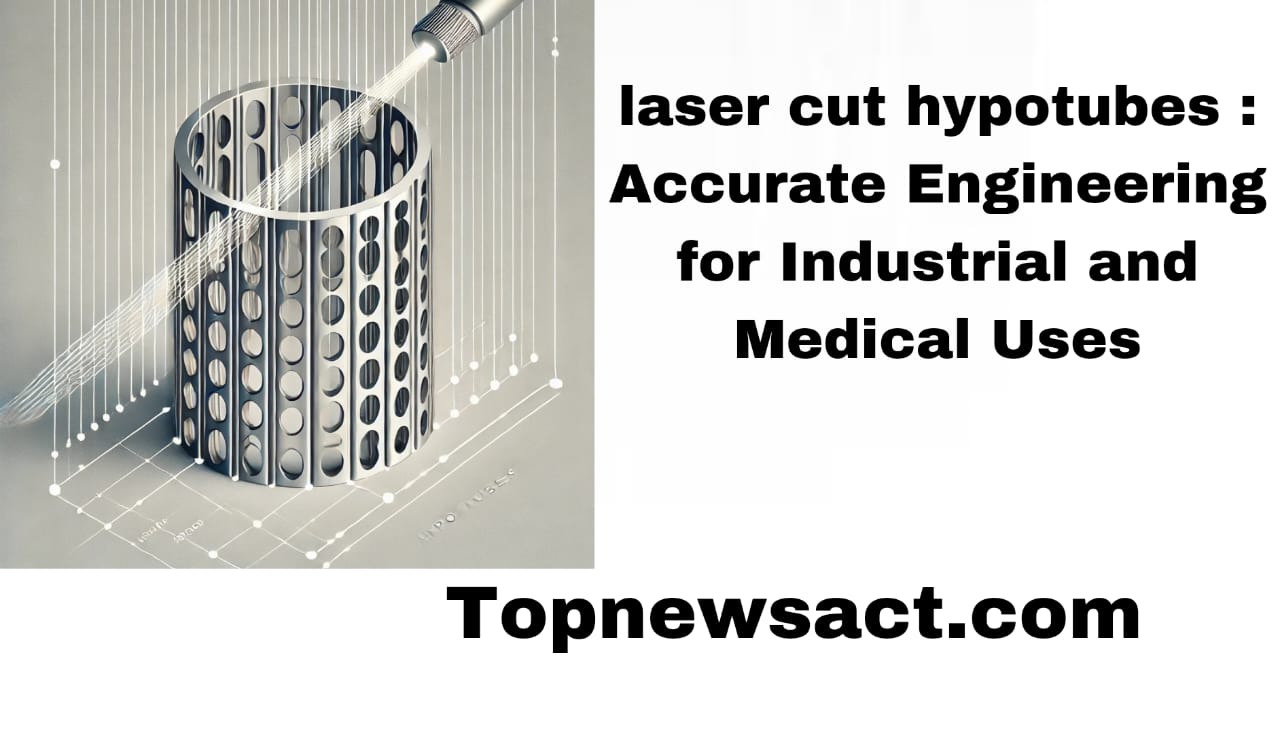Many industries have seen a change because to laser cutting technology, which offers unparalleled efficiency and precision. The creation of laser cut hypotubes is one of the most prominent uses of laser cutting among its many other applications. Small, usually cylindrical tubes composed of metals or polymers. Hypotubes are essential parts of many different sectors, but especially the medical field. Laser cutting is the perfect technique for producing hypotubes because it offers exceptional precision, complex patterns, and superior finishes.
Hypotubes: What Are They?
Applications requiring exact dimensions great strength and biocompatibility employ hypotubes which thin walled tubes. These tubes frequently used in the medical industry including in the production of surgical instruments guidewires stents and catheters. They also used in sectors where accuracy crucial such as electronics automotive and aerospace.
Hypotubes characterized by their small dimensions which can vary from less than 0.1mm to several millimeters and their thin walls. The tubes composed of polymer composites stainless steel and nitinol a shape memory alloy. Hypotubes require extremely precise production because of their delicate nature and the need for precise specifications.
Laser Cuttings Function in the Production of Hypotubes
When producing hypotubes laser cutting has a number of benefits. Cutting intricate shapes with remarkable accuracy is one of the biggest advantages. The tight tolerances required for thin-walled tubes may not achieved by conventional machining methods like milling or grinding, which can be sluggish. By using a concentrated beam of light to melt, burn, or vaporize material, laser cutting, on the other hand, enables precise cuts and. The preservation of high tolerances without coming into direct contact with the material.
Slots, perforations, and even perforated patterns examples of extremely small features that can made in hypotubes using laser cutting. In many medical applications where flexibility, pressure control, or fluid flow are crucial, these characteristics are indispensable. For example, to guarantee optimal performance, the hypotube. Used in guidewires for minimally invasive procedures needs to cut with accurate holes.
Advantages of Hypotube Laser Cutting
- Accuracy and Precision
Laser cutting is perfect for creating hypotubes that need to adhere to stringent standards. Because it can reach extremely tight tolerances frequently in the region of microns. Because even small variations might affect performance in medical applications. The accuracy of laser cutting guarantees that the hypotube’s dimensions are constant and dependable. - Limited Waste of Materials
The procedure of laser cutting is very effective and wastes very little material. This is especially crucial when working with pricey materials like shape-memory alloys or premium stainless steel. More material can utilized for the finished product rather of being wasted. Because of the laser’s ability to produce a thin kerf, or the breadth of the cut.
Difficult Geometries 3.
Intricate shapes and complicated geometries that would challenging or impossible to accomplish. With conventional machining techniques can now be created thanks to laser cutting. It is simple to add features like micro-sized holes, slits, and patterns into the hypotube. Many medical equipment, where usefulness and adaptability are critical, depend on these complex designs.
- There is no mechanical contact.
Laser cutting eliminates the need for direct contact with the material, in contrast to more. Conventional techniques like turning or milling. This removes the possibility of deformation or distortion, which is crucial when working with. Hypotubes that have thin walls and are susceptible to mechanical stress. Furthermore, the material’s integrity preserved by this non-contact method. Especially for alloys like nitinol that may be susceptible to pressure or heat. - Production at High Speed
Because laser cutting is quick, it’s perfect for producing hypotubes in large quantities. Because of its versatility and high throughput, firms may increase their operations without sacrificing quality. Additionally, the process’s speed shortens lead times, which is especially advantageous in sectors like medical device manufacture that have strict deadlines.
Medical Device Applications about laser cut hypotubes
The medical device sector is the one with the largest demand for laser-cut hypotubes. For devices like guidewires, stent delivery systems, and catheter shafts to function well in crucial applications, they must manufactured precisely. The required precision and customization made possible by laser cutting, which allows producers to produce tubes with precise measurements and complex designs that improve the functionality and security of medical equipment.
For instance, guidewires, which are crucial instruments for directing surgeons during minimally invasive surgeries, frequently use laser-cut hypotubes. In addition to having small apertures or slots that enable easy passage through the human body, the hypotube needs to precisely designed to have the ideal ratio of strength and flexibility. High accuracy and repeatability guaranteed to meet these standards thanks to laser cutting.
Conclusion about laser cut hypotubes
In the production of hypotubes, laser cutting has become a crucial technique, providing a productive, accurate, and adaptable way to make these vital parts. It is essential for sectors like aerospace and medical device manufacture, among others, due to its capacity to manage intricate designs, strict tolerances, and a variety of materials. The use of laser-cut hypotubes is probably going to grow much more as laser technology advances, satisfying the increasing need for more complex and dependable parts in crucial applications.



